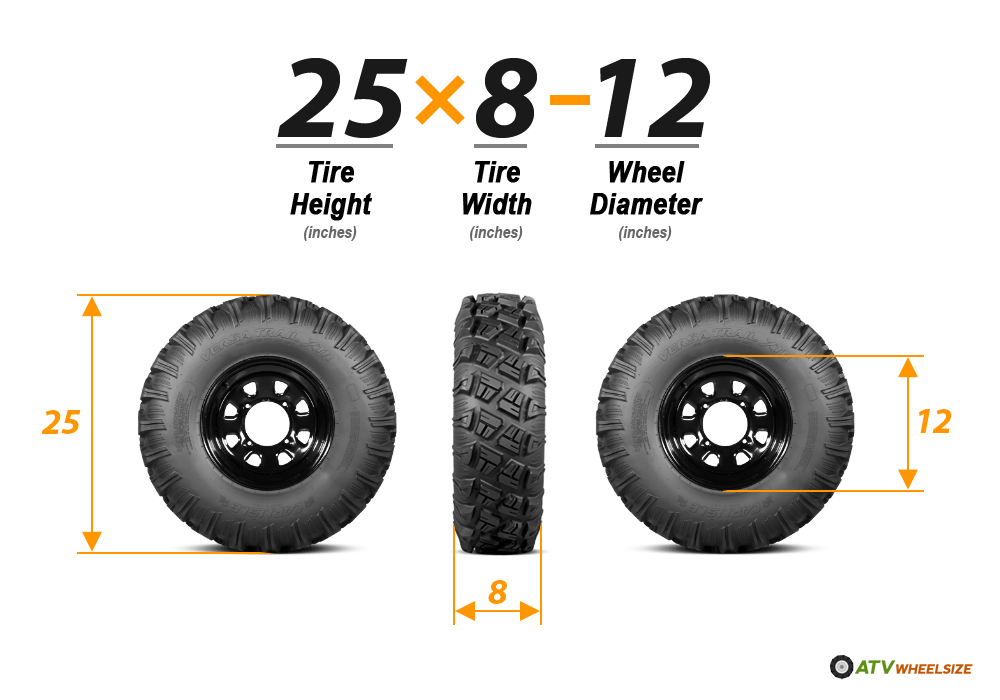ATV Tire Sizes Explained
The most common question faced by ATV/UTV owners, with the intention to change tyres on their four wheelers, is "How to read ATV tire size?"
ATV tire dimensions are placed on a side of the tyre, and a full size looks like very specific three numbers listed in a set and separated by dashes (25-8-12), "x" (25x8x12), or most commonly a combination of the two (25x8-12). Let's take the 25х8-12 size as an example, and give the complete explanation for it.
Tire size example: 25 x 8 - 12.
The first number is "25". This is the overall height of an installed and inflated tire (up to the recommended tire pressure) in inches. The height of this tire is 25 inches.
The second number is "8". This dimension means what the overall width of an installed and inflated tire is 8 inches. In our example, there is no letter "R" follows after the number, so this indicates that it is a bias tire. All radial type tires are marked by the letter "R" after the second number (Ex. 20x11R-9).
The last and third number is "12". 12 is the diameter of wheel or rim in inches. In this case, our tire will fit on a wheel with 12 inches wheel diameter.

Visual illustration for understanding ATV tyre sizes.
The Right Tire Sizes for ATV
ATV manufacturers do NOT recommend using tires of other sizes, except those that were originally installed from a factory. If you don't know the right tire size, select your make in the right menu and find your model/year for OEM tire specs for the front and rear axels.
If there is a need to increase the ground clearance, then it can be realized with bigger tyres. The basic rule of the possibility of increasing the size of tires for your stock rims is 1 inch in height and 1 inch in width. For example, your stock tires size is 25x10-12, and then you can increase the size to 26x11-12. But be aware, bigger tires may touch suspension components, fenders, shock, springs, and other parts of your ATV. Fat tires also may affect on handling, steering, acceleration, and fuel consumption.
Share with friends!
